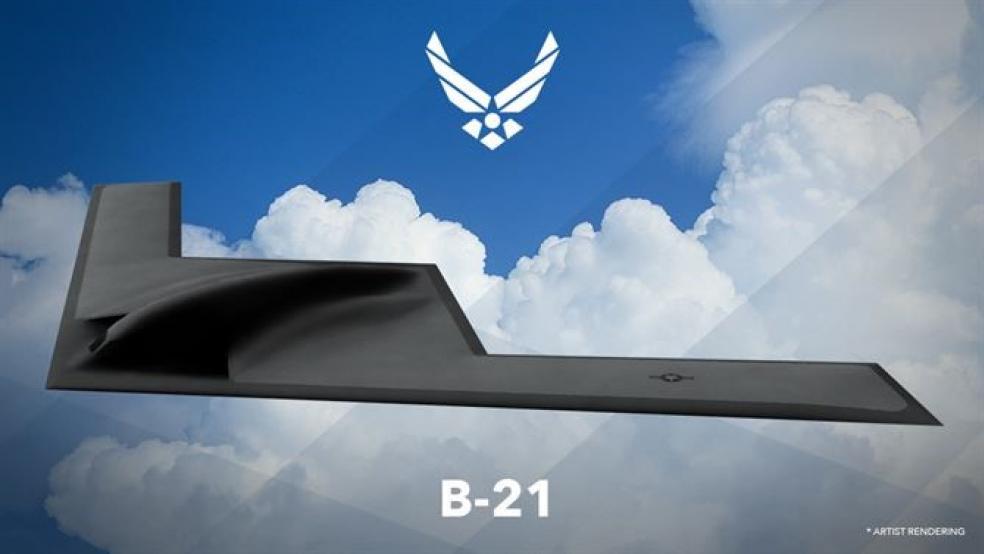The future of the Air Force’s bomber and fighter fleet may not involve human pilots.
A pair of experts argue in Defense One that the new B-21 bomber, also known as the Long Range-Strike Bomber, should be designed with an unmanned option that can be used as soon as the plane is operational.
Related: The F-35’s Billion-Dollar Brain Fails an IQ Test
The next-generation aircraft is supposed to enter service, with a crew, sometime in the mid-2020s. The Pentagon has indicated it could fly without pilots on board one day, but doesn’t seem to be in hurry to make that option a reality, a delay the experts call a “grave mistake.”
Designing an unmanned version of the plane, which is currently estimated to cost more than $100 billion over its lifetime, “would increase the U.S. military’s operational flexibility, providing much-needed endurance and persistence at only a marginal increase in cost,” the analysts from the Center for a New American Security write.
They contend that a pilotless plane might fare better against new air defenses being developed by China, Russia and Iran.
“An uninhabited B-21 could have much greater refueled endurance and persistence than it could with people onboard, enabling it to conduct ultra-long missions — for example, loitering in or near enemy territory until a target presents itself,” they wrote.
“Untethered from pilot endurance limits, a B-21 could stay aloft for days with aerial refueling, and could marshal many more sorties in an extended campaign,” they added.
Related: How the Air Force Is Stopping Hackers and Lawmakers from Leaking B-21 Secrets
The B-21 isn’t the only next-generation aircraft that could be unmanned. Many experts, including Senate Armed Services Committee chair John McCain (R-AZ), believe that the F-35 Joint Strike Fighter is the last hurrah for manned attack jets.
“We think that the Navy should be looking at drones to replace manned aircraft. I believe that the F-35 is the last manned fighter aircraft," McCain told National Journal last year.
"The F-35 should be, and almost certainly will be, the last manned strike-fighter aircraft the Department of the Navy will ever buy or fly,” Navy Secretary Ray Mabus said in a 2015 speech.
Of course, a big concern with developing unmanned aircraft is that it could get very expensive.
Take the F-35. Years of delays have driven the program’s price tag to nearly $400 billion. Now imagine if the Pentagon had also tried to develop an unmanned option, too; costs would have likely risen even higher, perhaps substantially so.
On the other hand, the CNAS experts argue that many existing “human-inhabited aircraft already have sophisticated autopilot features, which are steadily expanding to a broader range of functions.”
Related: How the Air Force’s New Planes Could Bankrupt the Pentagon
Even so, defense contractors are still trying to come up with autonomous technology that is mature and reliable.
There’s another issue as well: The Air Force is run by a bunch of people used to flying planes, and the move to unmanned aircraft could create a culture clash between fighter jocks and tech geeks.
“To their credit, service officials have acknowledged the eventual need for an uninhabited option. But their lack of urgency is consistent with a general lethargy about such systems outside of reconnaissance and counterterrorism-strike missions,” the experts note.
“For the good of the joint force, the Air Force must move beyond this reluctance.”





